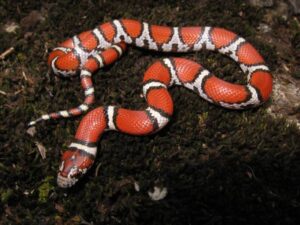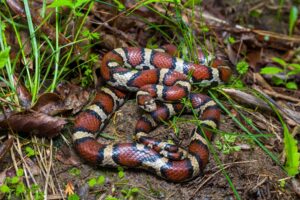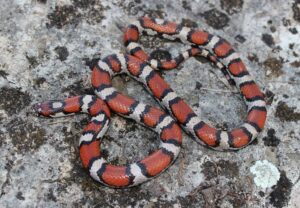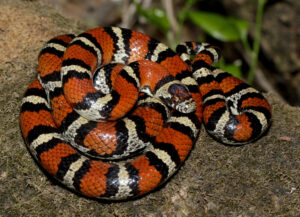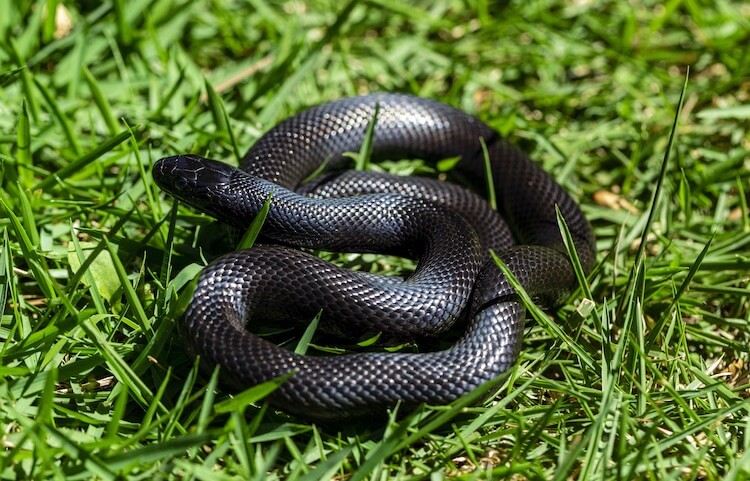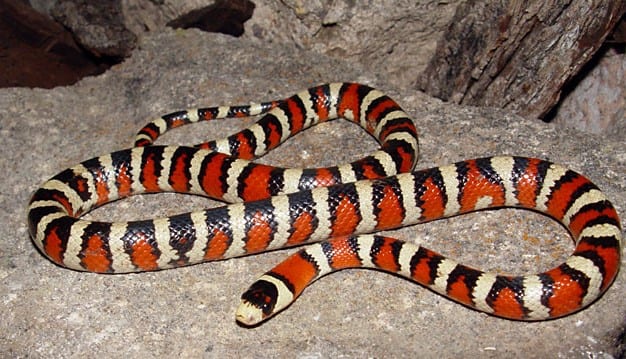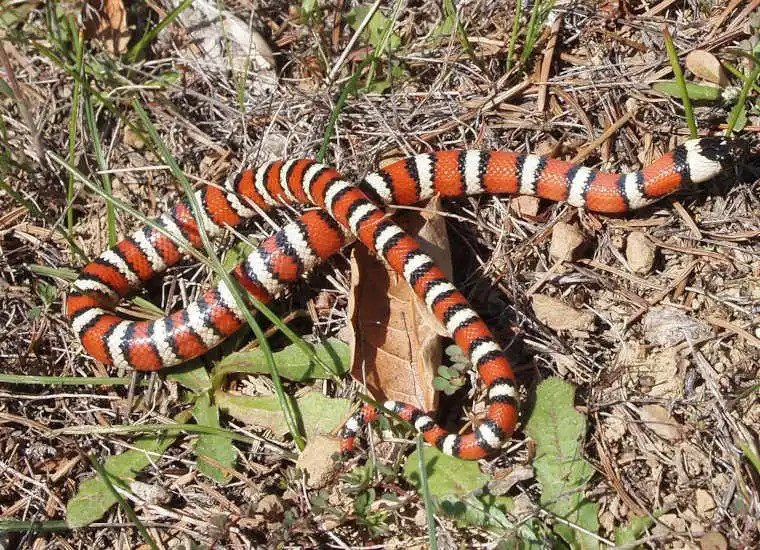Red Milk Snake (Lampropeltis triangulum syspila)
Updated on
30/01/2023The red milk snake or red milksnake is a subspecies of the milk snake. The beautifully colored, relatively small colubrid is endemic to the central United States. The secretive snake is seldom seen in the open and is active from April to late October. They can be kept as pets, and the wild-caught individuals settle down pretty easily.
Scientific Classifications
- Suborder:Serpentes
- Family:Colubridae
- Genus:Lampropeltis
- Species:L. triangulum
- Subspecies:L. t. syspila
Conservation Status
Description
Size
The average length of the snake is 24-36 in (60-91 cm) though individuals as long as 52 in (132 cm) have been found.
Color and Appearance
The dorsal color pattern is narrow bands of pale gray, white, tan, or cream bordered by black, alternating with red saddles. Some specimens display even greater diversity in their dorsal saddle colors, ranging from reddish to grayish brown. The venter is usually white displaying a black checkered pattern, and the head has a big red blotch with a black edge. Their body is covered by shiny and smooth scales.
Are They Dangerous to Humans
When disturbed, the snake usually thrashes around and may bite. This is accompanied by the excretion of a foul-smelling musk. It can display aggressiveness when threatened. But being non-venomous, it is harmless.
Red Milk Snakes at a Glance
Distribution
Their range extends from southern Indiana through northwestern Mississippi, southeastern South Dakota through eastern Oklahoma, western Kentucky, and Kansas.
Habitat
The colubrid inhabits south-facing, rocky hillsides, especially glades. It is also found among logs and rocks along forest edges. In winter, it lives in dens or rodent burrows on rocky hillsides. When the weather is hot, it takes shelter under big rocks or in animal burrows.
Lifespan
The red milksnake lives for 10-12 years.
Predators
The serpent can be preyed upon by bigger animals, including predatory birds and mammals. The eggs and babies are especially vulnerable.
Diet
The constrictors eat a variety of small rodents and reptiles, especially lizards.
Reproduction
Oviparous (lays eggs that hatch outside the body)
After courtship and mating in spring, eggs in clutches of 5 are laid in leaf litter, rotten stumps, or under large rocks in June or July. They hatch from mid-August to early September. The hatchlings average 8 in (20.32 cm) in length and have vivid red blotches.
Source
eastcoastdaily.in, msherps.com, i.pinimg.com, flickr.com

